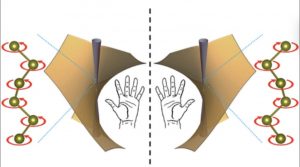Theory, prediction and detection for topological and chiral phonons
ZOOM registration site: https://forms.gle/eCwF6vC6F4GnMu8c7
The effective control of phonon cannot only provide a new perspective for the understanding of physical processes such as thermal conductivity and electroacoustic coupling, but also promote the realization of related applications. However, the fundamental properties of “zero spin” and electrical neutrality make the means of manipulation of phonons very limited. Around 2018, with the popularization of topological band theory to solid phonon spectrum, and the establishment of a first-principles method to calculate topological phonon in real material systems [1], the degree of freedom of “topology” was successfully introduced into phonon systems, and it offers a way to modulate phonons. In the first part of the talk, I will introduce the theoretical and experimental results of several topological phonon materials, such as the double-Weyl phonon material FeSi [1-2], the twofold quadruple Weyl phonon material BaPtGe [3-4], and the node-line phononmaterial MoB2 [5].
In addition to “topology”, phonon can also have a degree of freedom called “chirality”. For example, chiral phonons with non-zero circular polarization play an important role in the inter/intra-valley scattering of electron valleys and the light selection transition in the system that breaks the time-space inversion symmetry. However, in the past, most of the studies on chiral phonons were limited to two-dimensional systems, and the carrying group velocity was zero, which is not conducive to the practical application of chiral phonon in information dissemination [6]. Therefore, the second part of the report focuses on extending chiral phonon research to three-dimensional chiral crystal systems [7], and verifies the existence of chiral phonon at the center of BZ with high group velocity in α-HgS and elemental Te [8-9]. Finally, the talk will also explore the relationship between Weyl phonon and chiral phonon [9], as shown in the Figure below.

Reference
[1]. T. Zhang, et al., Phys. Rev. Lett., 120, 016401 (2018)
[2]. H. Miao, T. Zhang, et al., Phys. Rev. Lett., 121, 035302 (2018)
[3]. T. Zhang, et al., Phys. Rev. B, 102 , 125148 (2020)
[4]. H. Miao, T. Zhang, et al., Phys. Rev. B, 103, 184301 (2021)
[5] T. Zhang, et al., Phys. Rev. Lett., 123, 245302 (2019)
[6] H. Zhu, et al., Science, 359, 579-582 (2018)
[7] T. Zhang and S. Murakami, Phys. Rev. B , 4, L012024 (2022)
[8] K. Ishito, … T. Zhang, … et al., Nat. Phys. , 19, 142-142 (2023)
[9] T. Zhang, et al., Nano Lett., 23, 7561–7567 (2023)
